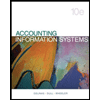100% - $% 0.00 123 B JUTIL T 00 105 110 120 150 200 210 215 220 225 200 C ACCOUmic Name D Cash - Big Bank Cash - Little Bank Accounts Receivable Inventory Equipment Accounts Payable Note Payable - Big Bank Note Payable - Little Bank Interest Payable - Big Bank Interest Payable - Little Bank Arial Y E UGUIL 10 Y BI F CIGUIL
100% - $% 0.00 123 B JUTIL T 00 105 110 120 150 200 210 215 220 225 200 C ACCOUmic Name D Cash - Big Bank Cash - Little Bank Accounts Receivable Inventory Equipment Accounts Payable Note Payable - Big Bank Note Payable - Little Bank Interest Payable - Big Bank Interest Payable - Little Bank Arial Y E UGUIL 10 Y BI F CIGUIL
Chapter10: Financial Statements And Reports
Section: Chapter Questions
Problem 4.4C
Related questions
Question
Create the post closing

Transcribed Image Text:## Chart of Accounts Overview
The image shows a section of a spreadsheet formatted as a chart of accounts for a business. A chart of accounts is a listing of all accounts used in the general ledger of an organization. The accounts are usually listed in the order of their appearance in the financial statements. Here is a transcription of the account list present in the sheet:
### Account Numbers and Names:
- **100**: Cash - Big Bank
- **105**: Cash - Little Bank
- **110**: Accounts Receivable
- **120**: Inventory
- **150**: Equipment
- **200**: Accounts Payable
- **210**: Note Payable - Big Bank
- **215**: Note Payable - Little Bank
- **220**: Interest Payable - Big Bank
- **225**: Interest Payable - Little Bank
- **300**: Common Stock
- **305**: Retained Earnings
- **400**: Sales Revenue
- **500**: Cost of Goods Sold
- **510**: Rent Expense
- **515**: Wages Expense
- **520**: Interest Expense
### Columns
- **Debit (E)**: This column is for recording debit transactions. Currently, it shows no entries.
- **Credit (F)**: This column is for recording credit transactions. It also shows no entries.
### Totals
At the bottom of the sheet, there are totals for both debit and credit columns, both currently at **0.00**. This indicates that no transactions have been recorded within this ledger at the time the image was captured.
### Notes:
This chart helps in organizing financial data efficiently, aiding in better financial reporting and analysis. Each account has a unique number that helps to categorize and track financial transactions easily.

Transcribed Image Text:**OverPriced Jeans, Inc. - March 2021 Transactions**
---
**Date - Description of the Transaction**
- **March 1**: Owners of OPJ invested an additional $55,000 cash into the business. The cash is put into Big Bank. *(This transaction has already been entered into the General Journal and posted to the General Ledger.)*
- **March 1**: Paid off the $60,000 Note Payable owed to Little Bank. The cash to pay off the note is taken out of Big Bank. Also paid Little Bank $450 for interest owed on the Note Payable for February. The $450 cash is also taken out of Big Bank.
- **March 1**: Take $5,000 cash out of Big Bank to pay for March's rent.
- **March 2**: The customer that purchased on credit on February 15 pays $88,000 cash to pay off the amount due. The cash is deposited into Big Bank.
- **March 10**: Sale of inventory to a customer—selling price $73,000—cost of the inventory sold $23,000. The customer pays cash. The cash is deposited into Little Bank.
- **March 15**: Take $26,000 cash out of Little Bank to pay employees for wages they have earned.
- **March 16**: Purchase $79,750 of additional inventory. OPJ will pay the manufacturer 50% of the $79,750 in 10 days. OPJ will pay the remaining 50% in 30 days.
- **March 17**: Sale of inventory to a customer—selling price $113,000—cost of the inventory sold $33,000. The customer will pay for the purchase in 30 days.
- **March 20**: Sale of inventory to a customer—selling price $165,500—cost of the inventory sold $40,750. The customer pays $35,500 cash that is deposited into Little Bank. The customer will pay the remaining amount in 30 days.
- **March 22**: Purchase inventory for $42,000 cash. The cash is taken out of Big Bank.
- **March 26**: Pay the manufacturer the 50% due on the March 16th purchase of inventory. The cash is taken out of Big Bank.
- **March 30**: Take $30,500 cash out of Little Bank to pay
Expert Solution
This question has been solved!
Explore an expertly crafted, step-by-step solution for a thorough understanding of key concepts.
This is a popular solution!
Trending now
This is a popular solution!
Step by step
Solved in 2 steps with 3 images

Knowledge Booster
Learn more about
Need a deep-dive on the concept behind this application? Look no further. Learn more about this topic, accounting and related others by exploring similar questions and additional content below.Recommended textbooks for you


College Accounting (Book Only): A Career Approach
Accounting
ISBN:
9781337280570
Author:
Scott, Cathy J.
Publisher:
South-Western College Pub

Principles of Accounting Volume 1
Accounting
ISBN:
9781947172685
Author:
OpenStax
Publisher:
OpenStax College


College Accounting (Book Only): A Career Approach
Accounting
ISBN:
9781337280570
Author:
Scott, Cathy J.
Publisher:
South-Western College Pub

Principles of Accounting Volume 1
Accounting
ISBN:
9781947172685
Author:
OpenStax
Publisher:
OpenStax College

College Accounting, Chapters 1-27
Accounting
ISBN:
9781337794756
Author:
HEINTZ, James A.
Publisher:
Cengage Learning,

Financial Accounting
Accounting
ISBN:
9781305088436
Author:
Carl Warren, Jim Reeve, Jonathan Duchac
Publisher:
Cengage Learning

Pkg Acc Infor Systems MS VISIO CD
Finance
ISBN:
9781133935940
Author:
Ulric J. Gelinas
Publisher:
CENGAGE L